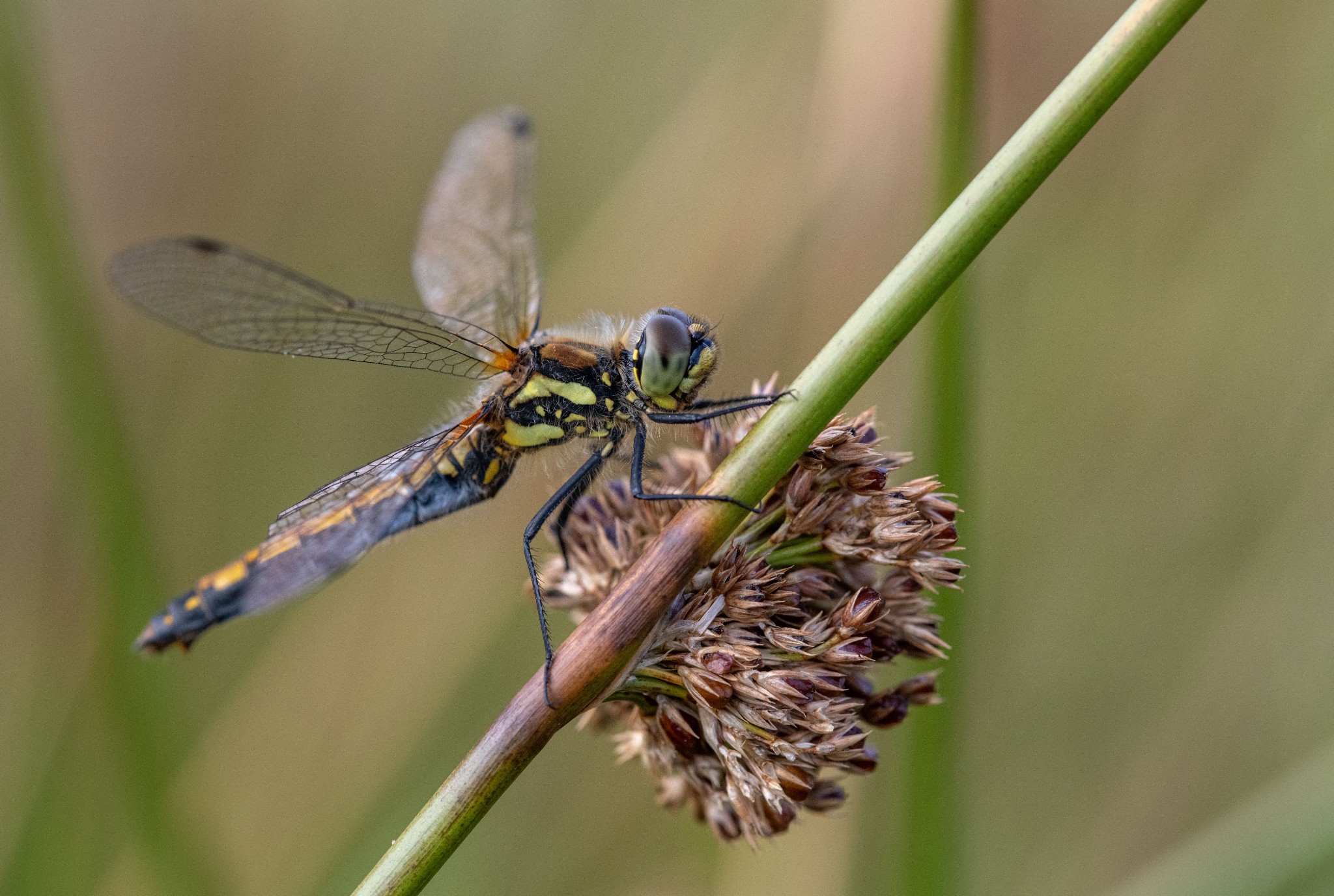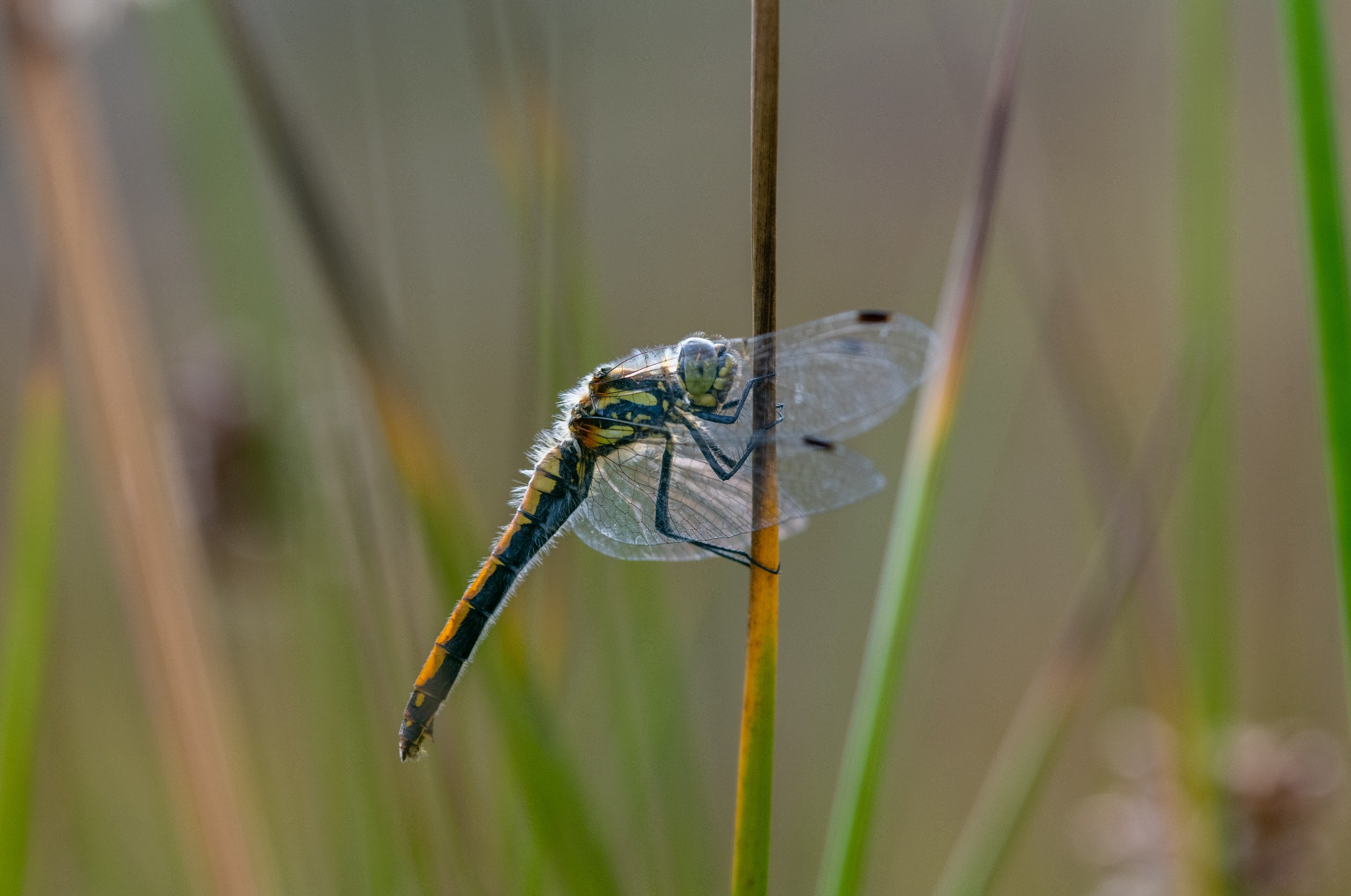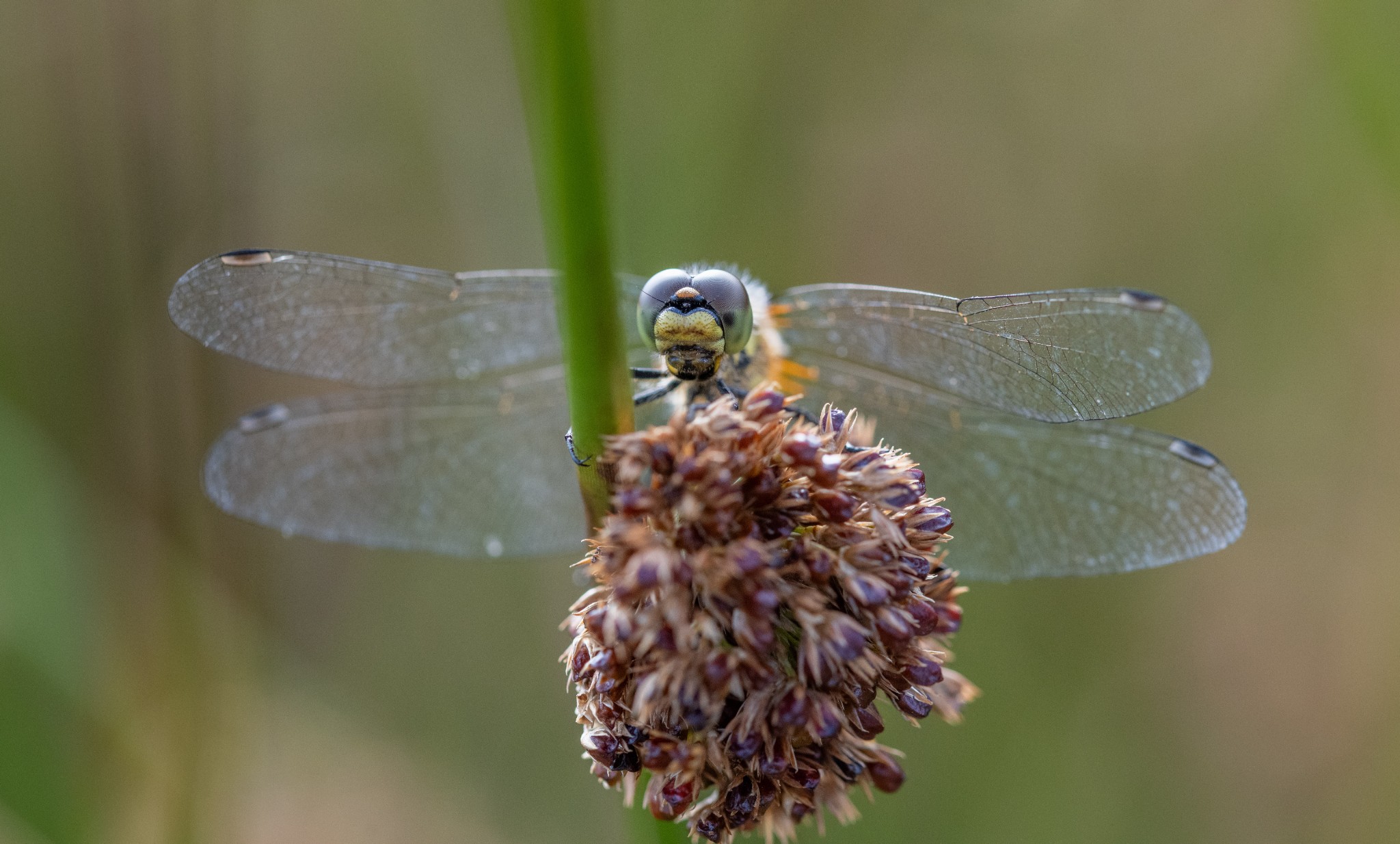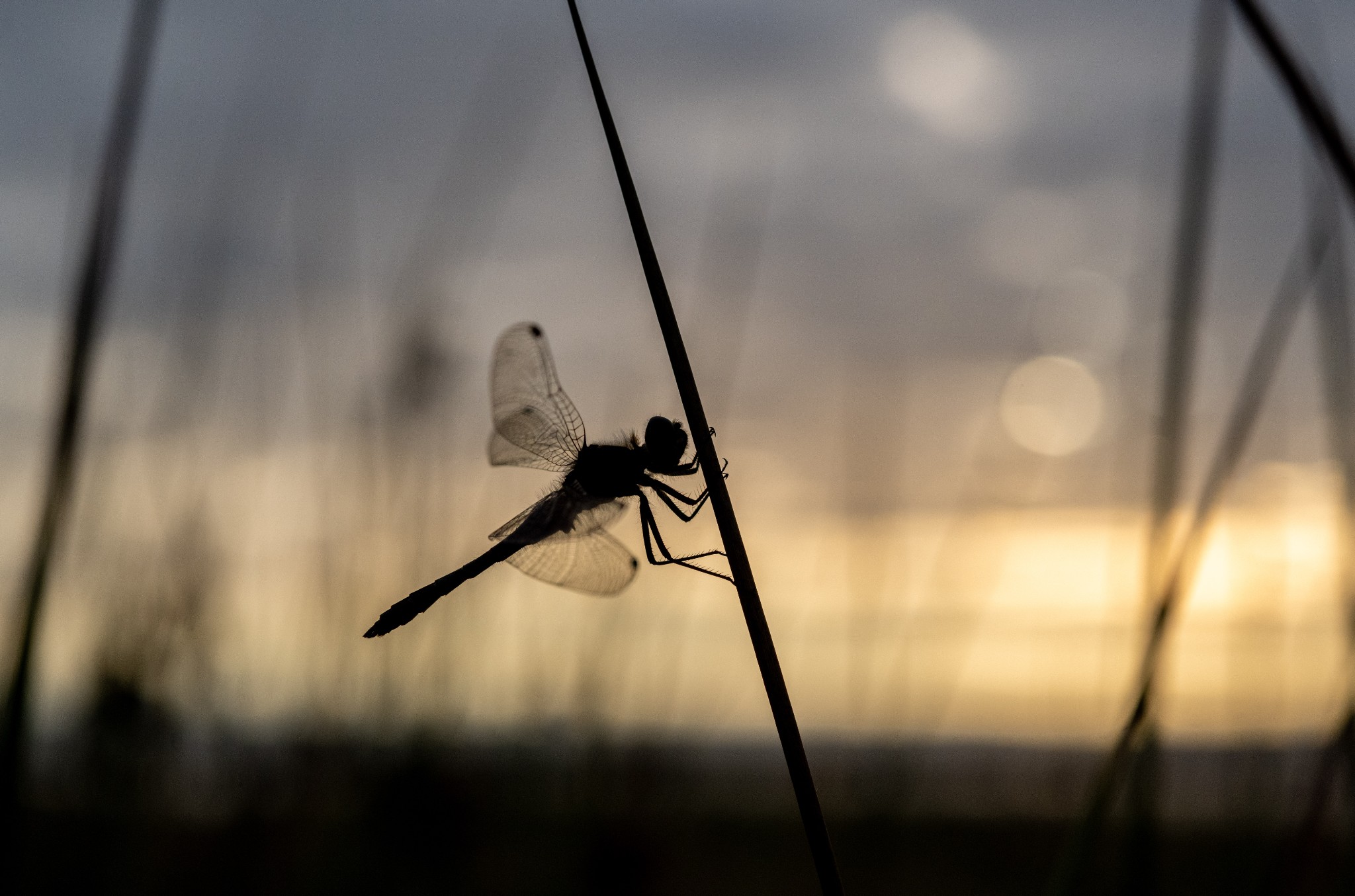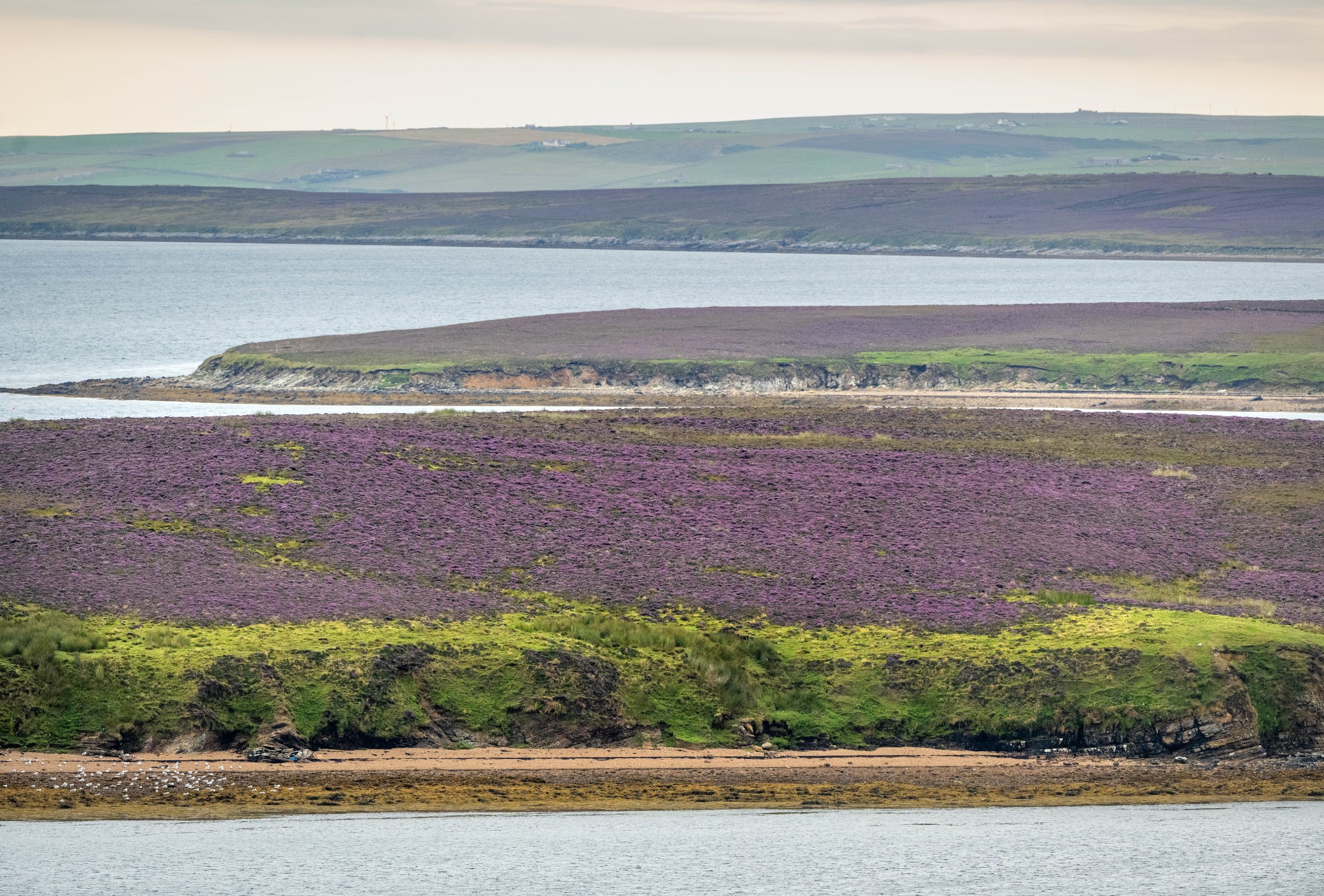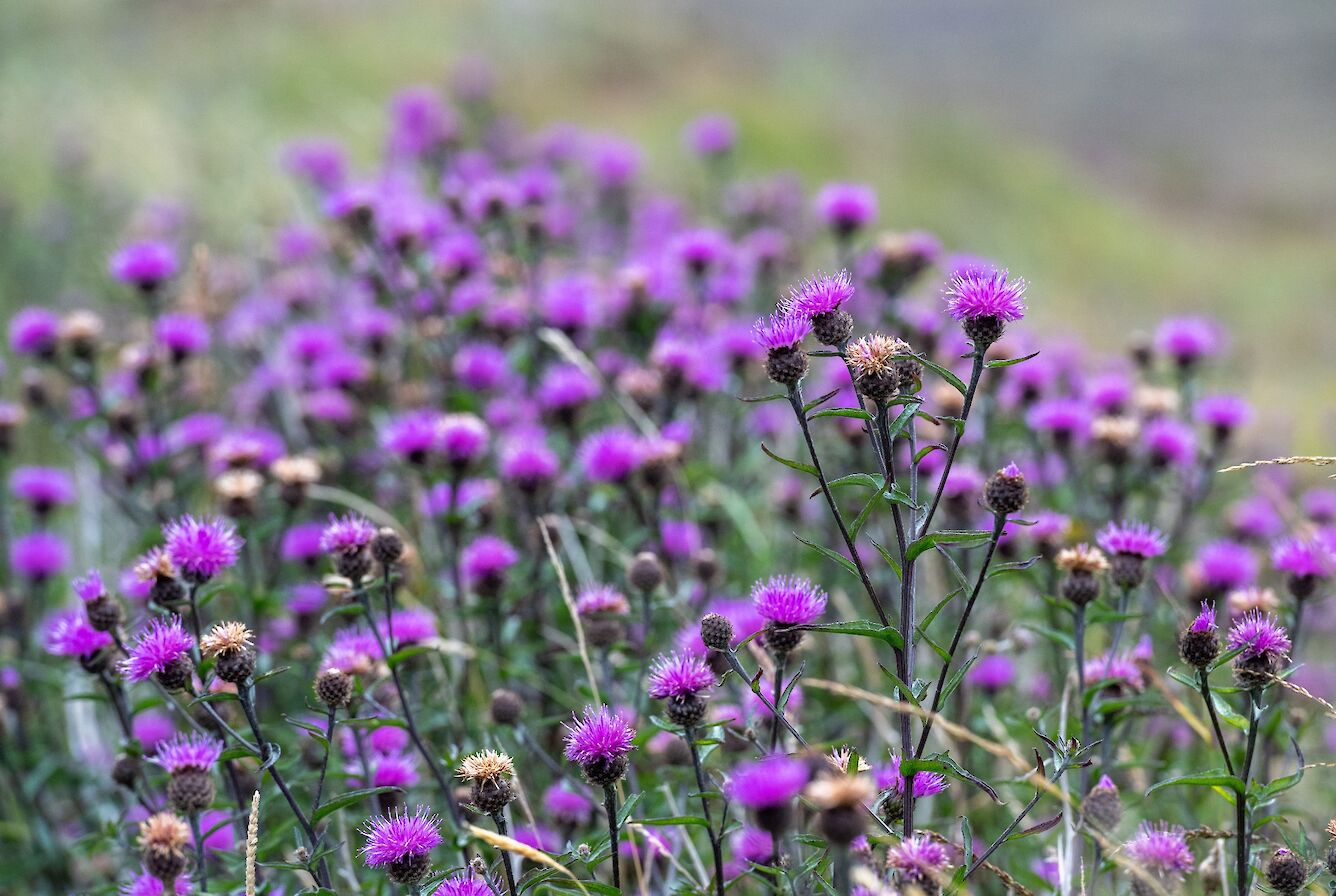You would think by late summer things would be winding down a little, but as I sit atop the morning ferry to Lyness, the full car deck below belies this thought.
In a good way it’s ‘forced’ me to bring my tent and stay overnight as the last ferry of the day is also fully booked.
It is generally thought that August can be a quiet month for wildlife in Orkney, but this really depends what you are looking for. I suspect now that the lush vegetation is dying back and the flower heads are looking distinctly autumnal that this might be more feeling than fact. I saw a gathering of swallows and house martins flitting around from fence posts to rooftops in Kirkwall before I set off - no doubt a collection of adults and this year’s young, perhaps 60 in total. What really delighted me though was seeing a newly fledged song thrush perched on the clothes ‘whirly’ in the back garden as I had my morning coffee.
An adult had been singing its heart out all spring and summer from a nearby chimney pot, its often jangly and sometimes jarring song belted out above the passing traffic. It would do its best to look inconspicuous with a beak full of food, waiting patiently until nothing was looking before alighting into a nearby fuchsia bush. It was this ‘inconspicuous’ behaviour that piqued my interest and hope that there might be a nest full of chicks being reared, yet I failed to see any young in the summer.
The still fluffy undercarriage gave this one away as a fledgling and my heart soared to think that we have a pair of breeding song thrush in the garden.
August is however the perfect month to see what I’ve come to Hoy in the hope of photographing, the black darter dragonfly. These dragonflies like to breed in acidic boggy pools so Hoy is the perfect habitat for this moorland loving species. Once off the ferry I don’t have to go very far to find them. In fact, it’s a right, a quick left and up the hill to Wee Fea and I can park close to the pools.
On arrival though I can see that the water level is very low; one pool has even dried out completely such has been the lack of rain this summer. The erratic nature of our rainfall now could pose a challenge to this species in the future. Two pools still hold water though and pond skaters dance effortlessly across the surface. The first species I see is an emerald damselfly, dainty compared to the black darter.
The pools are fringed with thick rushes and sedges, a favourite haunt of black darters, and this is where I find them. Mature male black darters are the only black dragonflies to be found in the UK so they are unmistakable. The female however is a yellow ochre colour with black markings underneath her abdomen, whilst immature males have similar colouring to the females. The abdomen is worth paying attention to as well as you’ll notice the male’s abdomen is pinched around a third of the way down whilst the female’s is more or less cigar shaped its entire length.
Good conditions for seeing dragon and damselflies at their most active are warm, calm days. This day is neither of those things and so the black darters remain steadfastly attached to the rushes. It’s not that it’s particularly windy but it’s unfortunate that the wind is coming from the south east and so is going straight up the hill towards me. To photograph a small creature with a macro lens whilst it’s moving back and forth in the breeze is going to be a challenge.
The light isn’t very inspiring and so I wait until the evening and the promise of some sun. As the light softens, I find a beautiful female resting with her wings set forward. I use a 105mm macro lens to throw the background into a pleasing haze of mauves and greens and the longer focal length also allows me to stay further away from the dragonfly so as not to disturb it into flight.
I have a little backlight now and I can see just how hairy black darters are! I can also see another distinguishing feature, the black wing spots also known as ‘pterostigma’. I shoot between the gusts but this makes one of the challenges of photographing dragonflies even harder. In most cases, unless we are trying to make a more abstract image, we want the eyes of whatever creature we are focusing on to be in focus. Given the magnification involved using macro lenses and the often-shallow depth of field associated with this discipline, the bulbous nature of their large eyes makes it hard to get both eyes and body in focus. You wouldn’t think such a short distance would make such a difference but it really does.
The challenge with this particular female is that because her wings are forward and I’m shooting parallel with her, my auto-focus wants to focus on the wings and not the eyes. I’m using auto-focus because she’s swaying back and forth in the breeze but I have to switch to manual focus to ‘bypass’ the wings and focus on the eyes. I simply set the manual focus to a certain point and let her come back and forth whilst I shoot all the while. I’d say the results are roughly 60/40 in favour of being out of focus.
I’m happy with the results though and as I can see I won’t have light for much longer, I change tactics. I switch my 105mm lens for a 60mm lens as these dragons are really inactive now and unlikely to fly away. The rushes are tall and so I hunker down and shoot up into the evening sky to focus simply on the shape of the black darter. Up close their lattice-like wings look impossibly delicate and what I’m hoping for is just a little light to highlight them. The wings look absolutely beautiful and once I’m happy with a few frames it feels like the right time to finish up.
However, I can’t resist a drive up to Hoy to see if there are any eagles soaring around the hills or otters swimming in the now flat calm sea. A quick scan around the Dwarfie Stone reveals only a pair of ravens. I head down to Moaness pier and I’m distracted by the crystal-clear water and can’t help thinking how much I would like to be diving in it and the photographic possibilities it could provide. There isn’t a soul around and I enjoy the solitude for a while before heading back south towards Lyness.
As I drive though, I see a seaweed-filled stretch of coast with the tide almost fully in and think to myself ‘that looks like it would be a nice stretch of coast for an otter’. I stop the car and unbelievably after my first sweep from left to right with the binoculars I see the unmistakable flick of an otter’s tail as it slips beneath the surface. I’ve filmed otters a lot over the years but I can tell you that the number of times I’ve thought a bit of coast looks good for otters then actually seeing one could be counted on one hand, with four fingers and a thumb missing!
For a moment I lose the otter but I see a herring gull looking a little agitated on the shore and, sure enough, the otter appears from the water next to it. It investigates an area of tussocky grass then simply slips back into the sea and away. I’m a long distance away from the otter and it’s almost dark but these fortuitous encounters are the ones I love the most.
After a less than perfect night’s sleep in the tent I’m awoken by the bright light of dawn and so I’m on the go again by 0500. I head back to the Wee Fea pools in the hope of photographing dew on the wings of the black darters. Again, they are easy to find but the conditions aren’t quite right for dew and so I hunker down once more this time facing east to the warm glow of the rising sun and I make a strongly silhouetted image.
After focusing on the details of the beautiful dragonflies it’s nice to sit back with a coffee and appreciate the spectacular nature of the purple display of heather all around. Looking across to Rysa Little in Scapa Flow, the whole island is purple. The vast majority of these great swathes are Ling Heathe and up close their tiny flowers look more pink than purple. I try another pool near Ward Hill for dragonflies and hit a blank, but the heather up here is even more thick and profuse. It contrasts beautifully with the rich green grasses and ferns, but looking a little closer I can see there’s bell heather here too, but it’s almost ‘over’ and the once magenta flowers have faded to a rusty orange.
August seems to be the month for purple flowers and fortunately for me alongside the ling heather lies a patch of the thistle-like knapweed with its rich purple flower. Next to the knapweed is a flower with a spectacular name though it’s a more violet than purple, the devil’s-bit scabious. Upon inspection the flower head is a complicated thing and a bit of a devil to photograph such is the nature of its long stalk, unordered with flowers at all angles.
I scan one last time for eagles but draw a blank – although not a complete blank - a female hen harrier drifts by but I can’t linger. It’s time to put away the binoculars, have a last coffee and head home on that full ferry back to Houton.
Find out more about Raymond’s work via his official website. You can also find him on Facebook, Twitter and Instagram.
